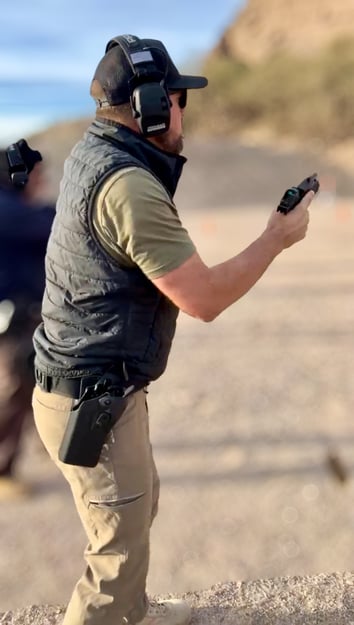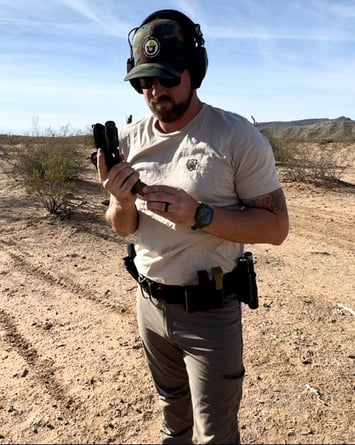Our Workspace
First Thoughts on Workspace
In the world of shooting, tactically speaking, “Workspace” is a term we use to emphasize efficiency, control, and security with your tools.
Your workspace is the area close to your body where you work with your tools — your firearm, magazines, flashlight and hands — ready for action. Whether you're reloading, clearing a malfunction, or assessing your surroundings, your firearm can and should remain in this zone, allowing you to maintain control and awareness.
Picture a determined toddler clutching a prized possession with an unrelenting grip, holding it close so no one can take it away. That’s the level of intent we want to replicate with our workspace.
By keeping your movements compact and your tools within arm’s reach, you enhance your ability to respond effectively and minimize the risk of losing control. It’s about working smart, staying in control, and ensuring everything you need is right where it belongs: in your workspace.
As you examine the still image above, notice how the firearm is:
Drawn closer to the chest
Elbow bending to bring it into the shooter’s workspace for a tactical reload.
Shooter’s eyes—still able to assess the area and staying engaged, rather than looking down at the ground.
The shooter’s support hand has already reached for the magazine in the number one mag pouch, bending at the elbow to bring the magazine into the workspace as well.
Both hands display that determined toddler-like grip we mentioned earlier, ensuring a deliberate and secure connection between the magazine and the firearm, without losing control of either.
The movements are intentional, quick, and smooth, all executed within the shooter’s workspace, maintaining control and readiness.
Now, go ahead and click on the image to explore another section on tactical reloading. Here, you’ll see the shooter actively working within their workspace while performing the reload, demonstrating the deliberate and controlled movements we’ve discussed.



